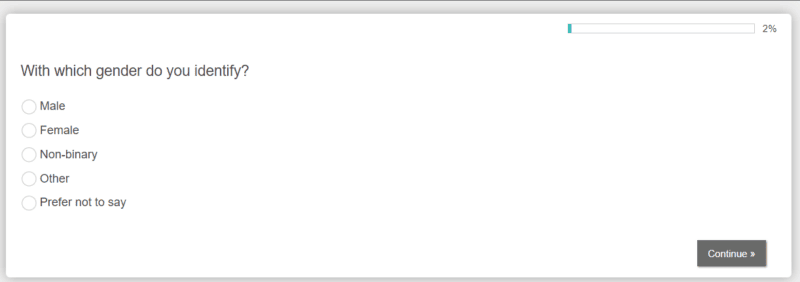9 strategies to promote inclusivity in quantitative research
When conducting quantitative research, it’s vital to strive for inclusivity. Inclusivity in quantitative research ensures accurate representation and reduces biases and discrimination, leading to more accurate results and effective insights.
But what do we mean by inclusivity? We’re talking about the deliberate strategy to collect accurate survey responses from diverse groups. This includes gathering multiple perspectives and experiences based on variables such as gender, race, age, socioeconomic status, locations, and more.
Seeking responses from a representative sample is not just a matter of ethical responsibility, but it impacts business outcomes. Neglecting inclusivity can lead to data that is either inaccurate or incomplete. On the other hand, conducting inclusive studies enhances the probability that the findings genuinely mirror the attitudes and behaviors of the intended population – generating trustworthy results that can guide essential business decisions.
Here are 9 recommendations to follow to enhance inclusivity in your next quantitative study:
- Maximize compatibility and accessibility. The survey should be compatible with all devices such as laptops, tablets, mobile devices, and computers, as well as different web browsers. Use survey platforms that are compliant with the Web Content Accessibility Guidelines (WCAG). Taking these measures will increase the amount of people that are able to complete a given survey.
- Employ simple language. Use straightforward language when constructing your survey questions, steering clear of jargon, acronyms, slang, or intricate terms. Ensure that your surveys are simple and clear to promote universal understanding.
- Provide clear instructions. Include precise and explicit instructions for all survey items, particularly those involving more complex exercises (e.g., category sorting, highlighter exercises, ranking, etc.). This practice ensures the acquisition of reliable responses from participants.
- Choose legible fonts and distinct colors. Prevent the use of light colors or small fonts, ensuring images and charts exhibit enough color contrast and are appropriate size for viewing. Also consider implementing a feature allowing participants to click and enlarge images. If respondents are unable to properly interpret the associated text or image, they might answer questions inaccurately.
- Provide descriptive text for images. For surveys featuring images or charts, include alternative text or captions to assist individuals with visual impairments in understanding the content.
- Translate to multiple languages. To cater to a global audience, consider offering your survey in multiple languages. This approach ensures that respondents can comprehend and respond to the survey accurately. Facilitating multilingual options enhances accessibility and encourages diverse participation.
- Recruit representative samples. Prior to data collection, acquire demographic information for the target population from a reliable source. During the data collection phase, continuously monitor and adjust sampling methods to ensure that the demographic composition of your sample accurately mirrors the population you are testing, including considerations such as equal representation of gender, age groups (e.g., Gen Z to Millennials), and other relevant factors.
- Ask about gender appropriately. Ask respondents to indicate their gender in a manner mimicking the following:
 Asking gender in this manner demonstrates respect for individuals of all gender identities, as well as enables a more precise interpretation of the collected data because an individual’s gender identity is much more relevant to their behavior, experiences and attitudes.
Asking gender in this manner demonstrates respect for individuals of all gender identities, as well as enables a more precise interpretation of the collected data because an individual’s gender identity is much more relevant to their behavior, experiences and attitudes. - Make sensitive demographic questions optional. Place demographic questions, including ethnicity, household income, education level and marital status at the end of the survey. Precede them with a disclaimer stating their usage for classification purposes only, and each question should include a “Prefer not to answer” option. These precautions ensure that posing these questions does not influence participants’ responses to the main survey and encourages honest answers to demographic inquiries.
Promoting inclusivity within quantitative research is critical for obtaining reliable and accurate findings, and these 9 recommendations provide general guidelines to achieve this successfully. While conducting quantitative research, it’s crucial to critically assess each study to achieve the highest level of inclusivity. Factors such as the study’s topic and objectives, the target population, sample size and sample availability should be considered. Each stride toward inclusivity enhances the value of a study’s outcomes.

